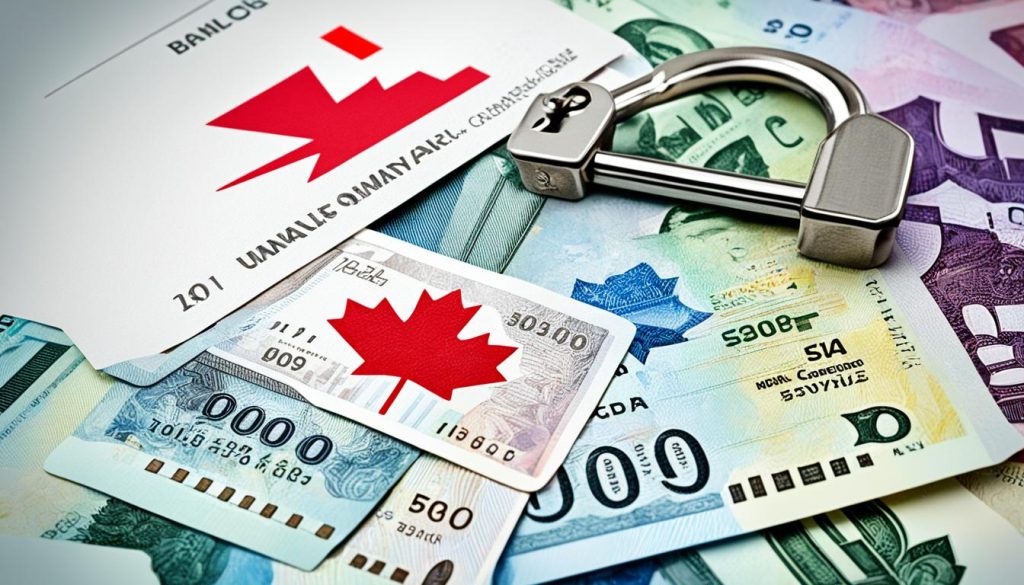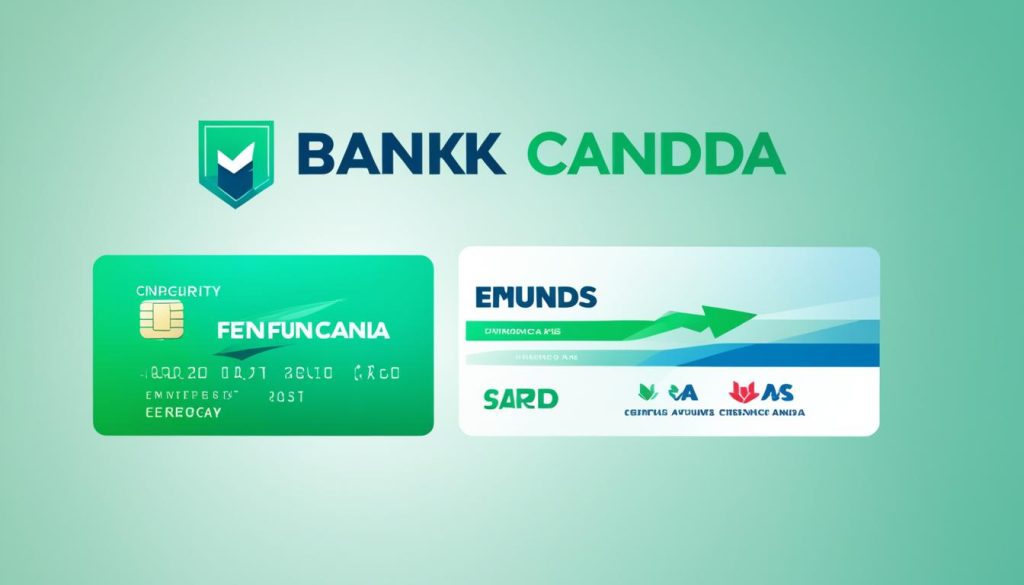Did you know that Canadians transfer over $3 trillion between bank accounts each year? With so much money constantly changing hands, understanding the various options for transferring funds is essential for individuals and businesses alike. Whether you’re looking to send money to a friend in Canada, a family member on the other side of the world, or your bank account at another institution, you have many options.
There are a variety of ways to transfer money between banks in Canada, including Interac e-transfers, wire transfers, electronic funds transfers (EFTs), money transfer apps and services, cheques, bank drafts, and money orders. The process and fees for each option vary, and it’s important to understand the details before choosing the best method for your needs.
In this article, we’ll explore the different ways to transfer money between bank accounts in Canada, including the steps involved, fees, and the advantages and disadvantages of each method. Whether you’re new to the process or just need a refresher, this guide will provide you with the information you need to make informed decisions about your money transfers.
Understanding Money Transfers in Canada
When it comes to transferring money in Canada, you have a wide array of options, each with its own process, fees, and timeline. From Interac e-Transfers and wire transfers to electronic funds transfers (EFTs) and money transfer apps and services, Canadians can choose the method that best suits their needs.
Types of Money Transfers
The most common money transfer methods in Canada include:
- Interac e-Transfer: A popular and convenient way to transfer money between bank accounts in Canada.
- Wire Transfer: Used for both domestic and international money transfers, providing a secure and fast way to send funds.
- Electronic Funds Transfer (EFT): Also known as direct deposits, EFTs allow you to transfer money online from one bank account to another.
- Money Transfer Apps and Services: Digital platforms like PayPal, Wise, and Wealthsimple Cash App offer convenient options for domestic and international money transfers.
- Traditional methods such as cheques, bank drafts, and money orders are still used for transferring money in Canada.
Importance of Money Transfers
Money transfers play a crucial role in modern financial transactions, facilitating the movement of funds between individuals, businesses, and institutions. Whether you need to send money to a friend, pay a bill, or make an international payment, the ability to transfer money efficiently and securely is essential. The choice of transfer method depends on factors such as the urgency of the transaction, the amount being transferred, and the destination of the funds.
How to Transfer Money Between Banks Canada?
Transferring money between banks in Canada involves a straightforward yet structured process. Whether you’re looking to conduct a bank to bank transfer, an electronic funds transfer, or a wire transfer, the key steps are similar across various methods.
1. Initiating a Transfer
The first step is to initiate the money transfer. This typically involves logging into your online banking account, selecting the “Transfers” or “Payments” option, and choosing the destination bank account. You’ll then need to enter the transfer details, such as the amount, the recipient’s banking information, and any reference or memo details.
2. Notifying Banks of Payment Obligations
Once the transfer is initiated, your bank and the recipient’s bank will need to be notified of the pending payment obligation. This process may involve additional verification steps, such as providing transaction details or confirming the recipient’s identity, to ensure the security and integrity of the transfer.
3. Settlement and Release of Funds
With the necessary notifications and verifications in place, the funds will then be settled and released between the two banks. Depending on the transfer method, this process can take anywhere from a few minutes to a few business days, with wire transfers typically being the fastest option.
4. Completing the Transfer
Finally, the transfer will be completed, and the funds will be available in the recipient’s account. You may receive confirmation from your bank, and the recipient may also be notified of the successful transfer. It’s important to review the transaction details and keep track of any fees associated with the transfer.
By understanding these key steps, you can confidently navigate the process of transferring money between banks in Canada, whether you’re sending funds to another account within the same bank or across different financial institutions.

Transferring Money Within the Same Bank
Transferring money between accounts within the same bank is generally easier and faster than transferring money between different banks. Since the transaction is handled entirely on the bank’s internal network and servers, it is usually free or low-cost and can be completed immediately or overnight.
If you need to transfer money from one bank account to another that you own at the same financial institution, the process is typically straightforward. Many banks offer the ability to transfer money to yourself between accounts, either through their online banking platform, mobile app, or by visiting a branch.
Similarly, if you need to send money to yourself between your accounts at the same bank, this can often be done quickly and conveniently. The ability to etransfer to yourself between your own bank accounts is a common feature offered by Canadian banks, making it easy to move funds as needed.
| Benefits of Transferring Money Within the Same Bank | Drawbacks of Transferring Money Within the Same Bank |
|---|---|
|
|
Overall, transferring money between your own accounts at the same bank is often the simplest and most cost-effective option when moving funds within Canada. It’s a convenient way to manage your personal finances and ensure your money is easily accessible when you need it.
Using Interac e-Transfers
Interac e-Transfers are a popular and convenient way to transfer money between bank accounts in Canada. The interac email money transfer canada process works as follows:
1. How Interac e-Transfers Work?
- The sender initiates an online money transfer canada by logging into their online banking platform or mobile app and selecting the “Interac e-Transfer” option.
- The sender enters the recipient’s email address or mobile number, the transfer amount, and an optional security question and answer.
- The recipient receives a notification and can securely accept the transfer by logging into their own online banking or by answering the security question.
- Once accepted, the funds are transferred from the sender’s account to the recipient’s account, typically within minutes.
2. Fees for Interac e-Transfers
The fees for interac email money transfer canada can vary depending on the financial institutions involved and the type of account. Many banks and credit unions offer a certain number of free Interac e-Transfers per month, after which a small fee may apply. The fees are generally low, often ranging from $0 to $1.50 per transfer.

Wire Transfers for Domestic and International Transactions
For Canadians seeking to send money domestically or globally, wire transfers remain a trusted and secure method. Whether you need to transfer funds to a friend, family member, or business partner, the wire transfer process provides a reliable way to move money between bank accounts.
1. Process for Sending Wire Transfers
Initiating a wire transfer typically involves the following steps:
- Contact your bank or financial institution and request a wire transfer.
- Provide the recipient’s bank details, including their account number and the bank’s routing information.
- Specify the amount you wish to transfer and the currency.
- Confirm the wire transfer details and authorize the transaction.
- Your bank will then securely transmit the funds to the recipient’s account, typically within 1-2 business days.
2. Wire Transfer Fees
The cost of a wire transfer canada can vary depending on your financial institution and the specifics of the transaction. Factors that may influence the fees include:
- Whether the transfer is domestic or international
- The currencies involved
- The urgency of the transfer
- Any intermediary bank fees
It’s important to check with your bank or money transfer services canada provider to understand the applicable fees before initiating a wire transfer. This will help you budget accurately and ensure the recipient receives the full intended amount.
Electronic Funds Transfers (EFTs)
Electronic Funds Transfers (EFTs), also known as direct deposits, are a convenient and secure way to transfer money electronically from one bank account to another in Canada. EFTs are a popular choice for efunds transfer canada, electronic funds transfer canada, and mobile banking transfer canada due to their ease of use and cost-effectiveness.
1. Setting Up EFTs
Setting up an EFT is a straightforward process. You typically need to provide your banking information, including your account number and transit number, to the party you wish to receive the funds from or send the funds to. Once the EFT is set up, the transfer can be initiated through your online banking platform or by contacting your bank directly.
2. EFT Fees
The fees associated with EFTs in Canada can vary depending on your bank and the specific transfer arrangements. Many banks offer free or low-cost EFT services for personal and business accounts, making them a cost-effective option for transferring money between banks. It’s important to check with your financial institution to understand the applicable fees and any limits on the amount or frequency of EFT transactions.

Money Transfer Apps and Services
In today’s digital landscape, money transfer apps and services have emerged as a popular and convenient way to handle domestic and international PayPal transfers, Wise transactions, and Wealthsimple Cash App payments in Canada. These platforms provide users with a seamless, electronic means of sending and receiving funds securely and efficiently.
Popular Money Transfer Apps
Some of the most widely used money transfer apps in Canada include:
- PayPal: A global leader in digital payments, offering PayPal transfer services for both domestic and international transactions.
- Wise (formerly TransferWise): A popular mobile banking transfer service that specializes in cross-border money transfers, providing competitive exchange rates and low fees.
- Wealthsimple Cash App: A Canadian-based money transfer services platform that allows users to easily send, receive, and manage their funds through a mobile app.
Fees for Money Transfer Apps
The fees associated with using money transfer apps and services in Canada can vary depending on the platform, the type of transaction, and the destination of the transfer. Generally, these platforms offer competitive rates and transparent fee structures, with some even providing free domestic transfers. It’s important to review the specific fee details for each service before initiating a transaction to ensure you’re getting the best value for your money.
Traditional Methods: Cheques, Bank Drafts, and Money Orders
While electronic payment methods have become more prevalent, traditional payment methods like cheques, bank drafts, and money orders are still used for transferring money from one bank to another bank in Canada. These time-tested options offer a reliable way to move funds between accounts, even in situations where digital transfers may not be feasible or preferred.
1. Using Cheques for Transfers
Cheques remain a widely accepted method for transferring money between banks in Canada. Simply fill out the cheque with the recipient’s information, the amount, and the date, and deposit or cash it at the recipient’s bank. This approach can be particularly useful for larger transfers or when the recipient does not have the ability to receive electronic payments.
2. Bank Drafts and Money Orders
For more secure and guaranteed fund transfers, Canadians can opt for bank drafts or money orders. These instruments are purchased directly from a bank or financial institution and are drawn against the bank’s own funds, reducing the risk of non-payment. Bank drafts and money orders are a popular choice for transferring money from one bank to another in situations where a higher level of trust or security is required, such as real estate transactions or large personal payments.

Pre-Authorized Debits (PADs)
When it comes to transferring money between banks in Canada, Pre-Authorized Debits (PADs) offer a convenient and efficient option. PADs allow you to set up recurring, automatic payments in advance, making them an ideal solution for ongoing transactions like bills, subscriptions, or loan payments.
Setting Up Pre-Authorized Debits
To set up a PAD, you typically need to fill out a pre-authorized debit form, which gives the biller permission to withdraw funds directly from your bank account. This process usually involves providing your banking information, such as your account number and transit number, to the biller. Once the PAD is established, the biller can automatically deduct the agreed-upon amount from your account on the scheduled payment date, ensuring your how to transfer money between banks canada obligations are met in a timely manner.
PADs offer several advantages for how to transfer money between banks canada. They can help you avoid late payments, eliminate the need to manually transfer funds each billing cycle, and provide a convenient way to manage your finances. Additionally, many billers offer discounts or incentives for setting up PADs, making them a cost-effective option for regular payments.
To set up a PAD, simply contact the biller and request the necessary paperwork. Once the form is completed and submitted, the biller will handle the recurring transfers, allowing you to focus on other financial priorities while ensuring your how to transfer money between banks canada obligations are met on time.
Conclusion
In conclusion, Canadians have a wide array of options when it comes to transferring money between banks. From the convenience of Interac e-Transfers and the flexibility of electronic funds transfers (EFTs) to the security of wire transfers and the familiarity of traditional methods like cheques and money orders, there is a money transfer solution to suit every need. Whether you’re sending funds to a friend, paying a bill, or moving money between your own accounts, understanding the available options and their associated processes, fees, and timelines is crucial to choosing the most appropriate method.
Regardless of the specific transfer method, the goal of seamlessly and securely moving money between banks in Canada remains a top priority. By exploring the various money transfer options and their unique characteristics, Canadians can make informed decisions that best align with their financial requirements and preferences. As the landscape of digital banking and payment technologies continues to evolve, the ability to reliably and efficiently transfer funds between banks will remain a vital component of personal and business financial management in Canada.
In the end, the flexibility and choice afforded to Canadians when it comes to how to transfer money between banks canada empowers them to manage their finances with greater ease and convenience, ultimately contributing to a stronger and more dynamic financial ecosystem within the country.
FAQ
1. Can you transfer money from one bank to another bank in Canada?
Yes, there are several ways to transfer money between bank accounts in Canada, including Interac e-Transfers, wire transfers, electronic funds transfers (EFTs), and more.
2. How do I transfer money from one bank to another bank?
The process typically involves logging into your online banking, selecting the Transfer Funds or Send Money option, and then entering the details of the recipient’s bank account. The specific steps may vary depending on the method you choose, such as Interac e-Transfer or wire transfer.
3. Can I transfer money from RBC to TD?
Yes, you can transfer money between RBC and TD bank accounts using various methods like Interac e-Transfers, electronic funds transfers (EFTs), or wire transfers. The process and fees will depend on the specific transfer option you choose.
4. Can you e-transfer to yourself between banks?
Yes, you can use Interac e-Transfers to send money to yourself between different bank accounts. This can be a convenient way to move funds between your own accounts.
5. Can I send money to myself between banks?
Yes, you can send money to yourself between different bank accounts in Canada using methods like Interac e-Transfers, electronic funds transfers (EFTs), or wire transfers.
6. What are the drawbacks of e-transfer?
Some potential drawbacks of Interac e-Transfers include transaction limits, fees for some types of transfers, and the possibility of delays in the transfer process. It’s important to understand the specific terms and conditions of e-Transfers before using this method.
7. What is the danger in e-transfer?
The main dangers with Interac e-Transfers are the potential for fraud, such as scams where someone tricks you into sending money to them. It’s important to only send e-Transfers to trusted parties and to be cautious of any suspicious requests.
8. Can the CRA track e-transfers?
Yes, the Canada Revenue Agency (CRA) can potentially track e-Transfers as part of their tax compliance and auditing processes. E-Transfers are considered electronic transactions that may be subject to CRA review.




